Freethiel
From the summits of Europe to the deep of Belgian football, this can be summed up in the story of KSK Beveren,
resident of the Freethiel stadium.
After making the biggest European clubs tremble, the Freethiel is now condemned to play supporting roles in the Belgian championship.

A velodrome in the middle of the polders
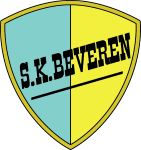 Beveren is a small city wedged between the Dutch border and the port of Antwerp. It is part of a natural region called the Waasland.
This territory specializes in the cultivation of turnips, this vegetable plant has become its emblem.
Beveren is a small city wedged between the Dutch border and the port of Antwerp. It is part of a natural region called the Waasland.
This territory specializes in the cultivation of turnips, this vegetable plant has become its emblem.
As for football, it only appeared in Beveren in 1926 with Standaard FC Beveren-Waes. This club receives the number 737 but in
the face of the little success encountered, he resigns from the Belgian federation in 1931. Three years later, former members of
Standaard try to relaunch football in the Waeslandian city by creating the Sportkring Beveren-Waes. The colors of this new
club are yellow and blue (city colors) and the federation gives it the registration number 2300. Playing in meadows, the new club
doesn't yet have a real stadium.
The club had to wait until 1938 to move into an old unused velodrome. Indeed, from the beginning of the 20th century until the
beginning of the 1930's, this velodrome had a certain success but little by little, the cyclists abandoned it. In order not to
let his property without use, Frederik Thielemans offers the young football club of SK to come and play. To do this, the cycle
track is destroyed and a wooden stand is erected along the ground while dunes serve as bleachers along the other sides.
Speaking of terrain, it isn't a nice green lawn but bad sandy ground. It wasn't until the rise of Beveren in the national series
(in 1949) that a real lawn was established in the stadium. To name it, the club leaders have a simple idea : contract the name of
the owner of the land. The stadium is now known as Freethiel.
To celebrate the arrival in the new stadium, Beveren is hosting a friendly match against the English club Eastleigh Athletic FC.
The first leg was won by Beveren (2-1) and the second leg should have been played in England. Unfortunately, this match will never
take place : World War II has just started. The English club receives a cup in thanks for their trip which, sixty years later, was
sent back to Beveren by the last player still alive from Eastley. This cup is the memory of the very first international game
disputed by the Waeslandians.
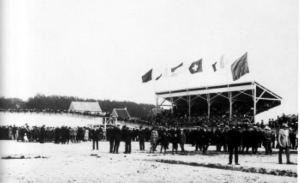
From provincial to D1 in 18 years
Thus, SK Beveren very (too ?) quickly crossed the levels of Belgian football. In just 15 years, the SK arrived in the national divisions a few years after the end of the Second World War. After the installation of the new lawn, the dunes and the wooden stand are replaced by real constructions. The new facilities were inaugurated on August 21, 1949 in a match against the Division 1 club Eendracht Aalst.
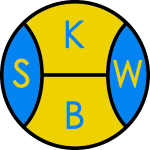 In 1966, a new coach arrived at the club : Guy Thys. Accustomed to leading clubs in the lower divisions, Thys will nevertheless allow
Beveren to lay the first milestones in the conquest of the title of Belgian Champion of Division 1. Many years later, Thys will become
the favorite trainer of the Red Devils with whom he will write among the most beautiful lines of the national team (Euro 1980,
World Cups 1982, 1986 and 1990).
In 1966, a new coach arrived at the club : Guy Thys. Accustomed to leading clubs in the lower divisions, Thys will nevertheless allow
Beveren to lay the first milestones in the conquest of the title of Belgian Champion of Division 1. Many years later, Thys will become
the favorite trainer of the Red Devils with whom he will write among the most beautiful lines of the national team (Euro 1980,
World Cups 1982, 1986 and 1990).
From 1967, SK Beveren therefore arrives in Division 1. Obviously, the Freethiel isn't at all ready to host high-level games but
quickly, the club and the city of Beveren are building a real D1 stadium. A new main stand is built, as well as new changing
rooms and offices for the club. Along the other sides of the field, terraces are also erected. The capacity is about 16,350 places.
Very quickly, the enlargement of the terrace on the Klapperstraat side brought the capacity to 18,000 places in 1972 and two years
later, a huge standing and covered stand was built at the other end of the ground. The Freethiel then reaches its maximum
capacity of 22,000 places. At the same time, lighting is installed on four pylons at each corner of the lawn. Beveren has a modern,
comfortable stadium which meets the highest standards of the time of the Belgian federation and UEFA.
Beveren is also setting up specific training for goalkeepers and this policy will make the club famous for the next thirty years.
The Beveren Goalkeepers School has had several stars : Jean-Marie Pfaff, Filip De Wilde, Geert De Vlieger, Erwin Lemmens or
Tristan Peersman for the most famous. They were all Red Devils.
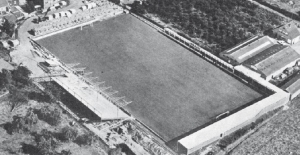
The "little Anderlecht"
The golden age of the club began in the 1977-1978 season. Thanks to a very technical tactic (which earned him his nickname
"little Anderlecht") and excellent goalkeepers, Beveren equaled what had hitherto been its best performance with a fifth place
overall. But the club also won its first Belgian Cup against Sporting Charleroi (2-0) at Heysel in front of 38,000 spectators.
From the following season, in the Cup Winners' Cup, Beveren becomes a giant killer. After having succeeded in dominating Anderlecht,
Club Brugge, Standard and the other Belgian tenors, Beveren indulged in the luxury of eliminating Inter Milan but was eliminated with
honors in the next round by the future winner of the event, FC Barcelona. Beveren arrived in the ½ final when it entered for the first
time. The Freethiel had become an impregnable fortress, famous throughout Europe. The stands are always full, the club is in heaven.
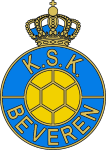 The following season, Beveren did even better by becoming Belgian Champion. The small club that started out on sand has risen to the
same level as the country's big clubs.
The following season, Beveren did even better by becoming Belgian Champion. The small club that started out on sand has risen to the
same level as the country's big clubs.
Qualified for the Champions Clubs' Cup, Beveren has however been knocked out without pity by the Servette Geneva (Switzerland). In
the Belgian league, the club finished at a disappointing eleventh place.
From the following season, the club finds its level with the return of its successful trainer, Urbain Braems. Beveren always ends in
the first part of the ranking the following seasons.
In 1983, Beveren won a second Belgian Cup against the Club Brugge (3-1) and a second title of Champion in 1984. The same year,
the club was recognized as a Royal Society at its fiftieth anniversary and adapted its name to Koninklijke Sportkring Beveren.
Still as dominant, Beveren again reached the Belgian Cup final in 1985 but lost to the Cercle Brugge during the penalties (1-1 and 5-4).
A new qualification for the UEFA Cup punctuates the 1985-1986 season. During this edition, Beveren realizes without knowing its latest
European feat : a new European tenor falls to the Freethiel. The Spaniards of Athletic Bilbao were eliminated by Beveren in the round
of 16. In the next round, the Torino Calcio proved to be too strong for Beveren.
The championship results got worse and worse and the club eventually fell in Division 2 at the end of the 1989-1990 season.
Beveren's golden age is definitely over.
With few financial means but thanks to excellent football, Beveren managed to stay in Division 1 for 17 years, while winning two
Champion titles (1979 and 1984), two Belgian Cups (1978 and 1983) and two Belgian Suepercups (1979 and 1984).
In addition, the club has become the specialist in training goalkeepers. Few small clubs can say the same.
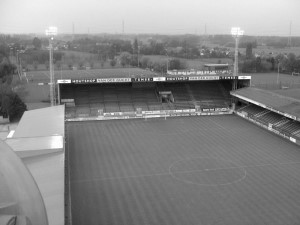
The harder the fall...
In addition to the sporting plunge, the stadium also undergoes the outrages of time. Even if the stands are still in good condition,
their age is starting to pose problems.
At the end of the 90's, the top of the standing stand on the Klapperstraat side was condemned. In the last qualification for the
UEFA Cup in 2004, the club had to adapt its facilities to be able to play in its stadium. Thus, seats are installed in the two end
terraces while lighting suspended from cranes is used to compensate for the weakness of the lighting installed in 1974. The capacity
drops to 15,400 places.
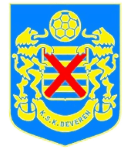 At the sporting level, the 2001-2002 season should have been the last of the club in Division 1. Of an appallingly weak, Beveren
obtained only 2 victories and 4 draws against 24 defeats and 91 goals conceded (against 30 marked in 34 matches) for a result of
14 small points. The club owed its salvation only to the bankruptcies of RWDM and Eendracht Aalst, these two clubs being relegated
administratively to Division 3.
At the sporting level, the 2001-2002 season should have been the last of the club in Division 1. Of an appallingly weak, Beveren
obtained only 2 victories and 4 draws against 24 defeats and 91 goals conceded (against 30 marked in 34 matches) for a result of
14 small points. The club owed its salvation only to the bankruptcies of RWDM and Eendracht Aalst, these two clubs being relegated
administratively to Division 3.
This miraculous rescue led to a profound change in attitude by the Beveren direction.
Having no more money, the club has linked up with the French Jean-Marc Guillou, who was at the head of a football academy in Ivory Coast.
On the other hand, Guillou founded a partnership between Beveren and the English club Arsenal. The scheme is simple : Guillou brings many
Ivorian players to Beveren and the best of them, after being tested in Beveren, will be sent to Arsenal. Thus, the first team is made up
almost exclusively of former players from ASEC Mimosa, the Ivorian club linked to the Guillou's academy. In the middle of conservative
Flanders, seeing eleven Ivorians defending the colors of Beveren was somewhat confusing at the time. Regardless, this combination
allowed Beveren to save herself sportingly and financially, at least at first. The club reached the final of the Belgian Cup in 2004
for the last time (defeat against Club Brugge 4-2 (after extra time) and at the same time obtained its last qualification for the
UEFA Cup (Club Brugge having already qualified for the Champion's League). This last qualification has seen Beveren eliminate
FC Vaduz (Lichtenstein) and Levski Sofia (Bulgaria) but the group phase has been a real torture for the number 2300 : Beveren has
been destroyed by the Germans of VfB Stuttgart (1-5), Croatians from Dinamo Zagreb (6-1), Portuguese from Benfica Lisbon (0-3) and
Dutch from Heerenveen (1-0). From the giant killer of the 70's and 80's, Beveren became a willing victim on the European scene.
After this unexpected qualification, Beveren has played two more seasons at the highest level before tumbling one last time
in Division 2.
Since the end of the boom years, the public has increasingly deserted the spans of the Freethiel. The club, meanwhile, can no
longer afford to maintain its stadium properly and finances in the red didn't encourage optimism.
After having the ambition to go up quickly in D1, Beveren never managed to do better than a ninth place.
At the end of the 2009-2010 season, the club management throws in the towel and doesn't apply for the professional license. A merger
is envisaged with the neighbors of KFC Red Star Haasdonk (number 4068) but the request having not been returned to the Belgian
federation within the deadlines, this one isn't accepted by the federation. To circumvent this refusal, the two clubs adapt : the
KSK Beveren align no more than youth teams and a female team, while the Red Star (meanwhile mounted in Division 2) move to the
Freethiel and changes its name . The number 2300 doesn't disappear but will never again play in Division 1.
A long and glorious history of 76 years is plunged into a long coma.
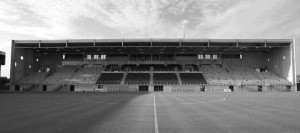
A renovation for... another club
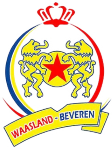 As with the Canonnier,
Edmond Machtens
or the Kiel stadiums, instead of a
merger, it is therefore a substitution club which takes the place of the deceased KSK Beveren at the Freethiel.
As with the Canonnier,
Edmond Machtens
or the Kiel stadiums, instead of a
merger, it is therefore a substitution club which takes the place of the deceased KSK Beveren at the Freethiel.
Funny detail, the Red Star, this small anonymous club from the provincial series, had already moved to Puyenbeekstadion in order to
take the place of another club struck off in the region, the Koninklijke Sint-Niklaas SK Excelsior (number 221), in 2002.
It changed his name to KFC Red Star Waasland at the time.
So, the Red Star moved to Freethiel in 2010 and renamed itself Koninklijke Voetbalclub Red Star Waasland-Sportkring Beveren,
or more simply Waasland-Beveren.
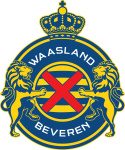 Before the SK's demise, the city of Beveren had undertaken major work to bring an aging the Freethiel up to standard. The main
stand built in 1967 was wrecked and replaced by a new construction with 4,000 seats. Unfortunately, the SK will never be
able to use it and this honor will be reserved for its successor.
Before the SK's demise, the city of Beveren had undertaken major work to bring an aging the Freethiel up to standard. The main
stand built in 1967 was wrecked and replaced by a new construction with 4,000 seats. Unfortunately, the SK will never be
able to use it and this honor will be reserved for its successor.
On the Klapperstraat side end, the old terraces of 1972 are definitively closed and doomed for demolition. Pending a reconstruction
project, the old stand is transformed into a wall of advertisements.
With the closing of this stand, the capacity fell to 8,190 places. It is little compared to the glory days of KSK Beveren but
sufficient in view of the poor results of the new occupant of the Freethiel.
After a rise in Division 1 in 2012, and so far, Wassland-Beveren has never left the bottom of the rankings. On the other hand, and
even if it is less numerous than before, the faithful public is still very present in the spans of Freethiel.
Pictures
Freethiel
The first wooden stand, in the 1930's. The velodrome is still visible in the background.
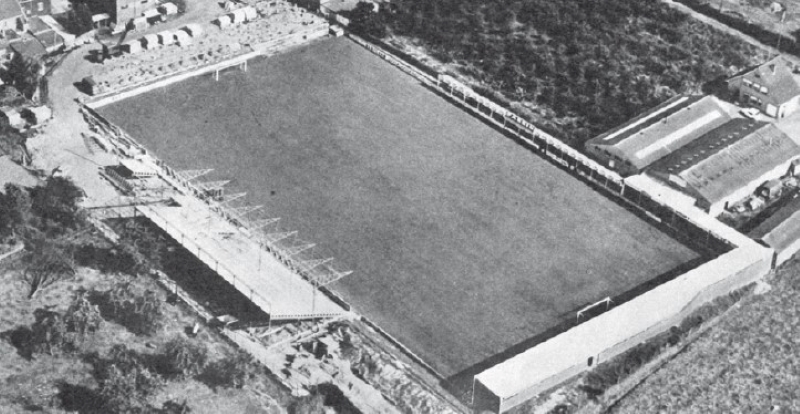
Freethiel
Massive modernization of the Freethiel in 1967.
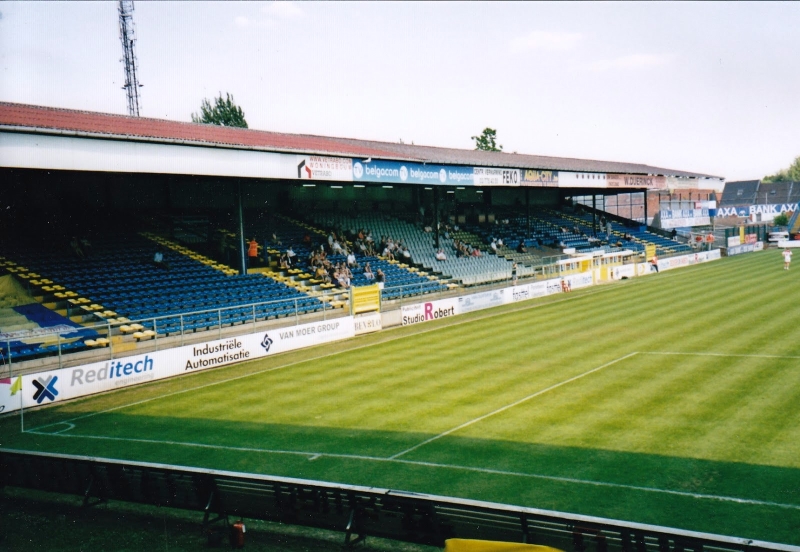
Freethiel
The main stand from 1967. A rustic but functional construction.
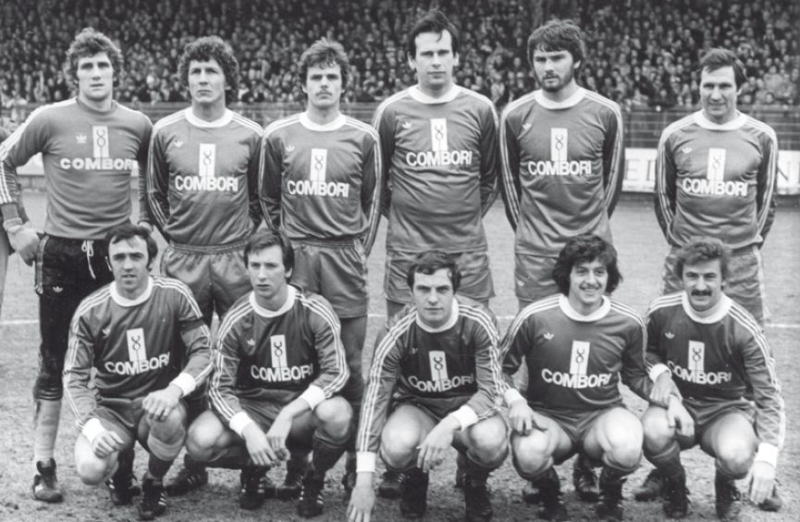
Freethiel
The Belgian champion squad in 1979, notably with Jean-Marie Pfaff.
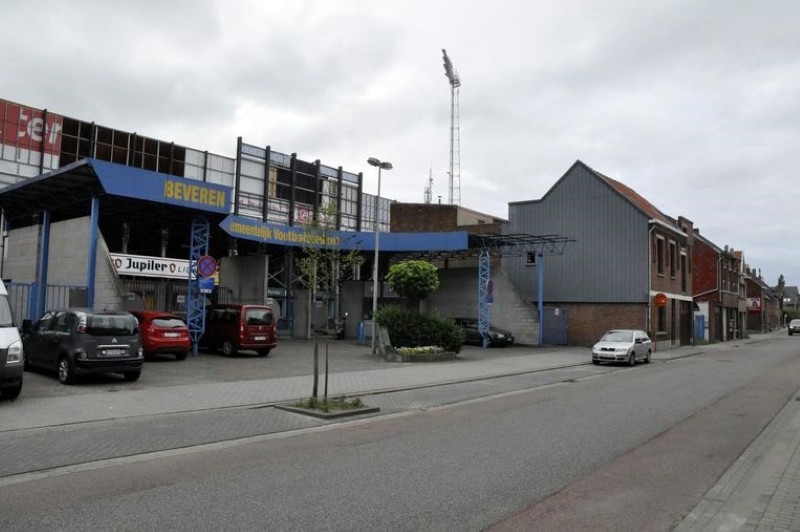
Freethiel
The back of the standing stand along the Klapperstraat. This terrace will be gradually closed between 2002 and 2012.
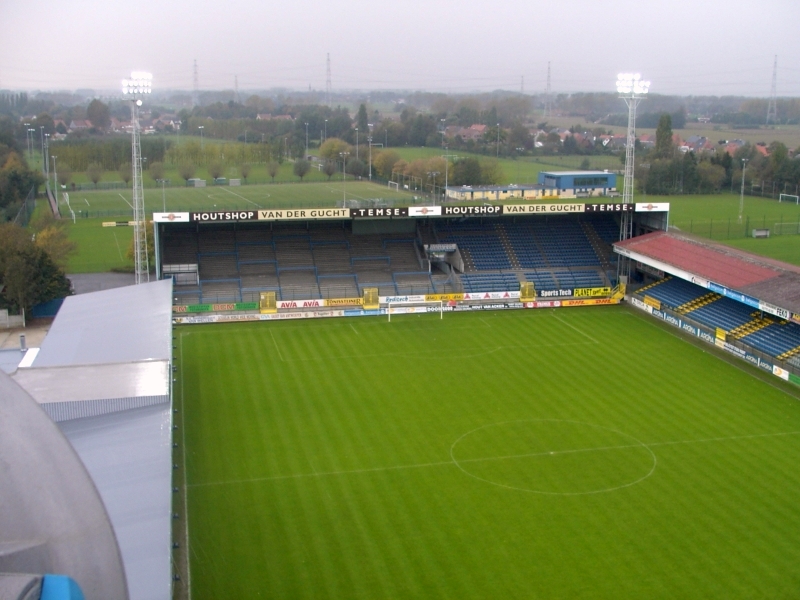
Freethiel
Except for the installation of new seats, the Freethiel has kept the same face for about twenty years : two seating side stands and two standing stands at each end.
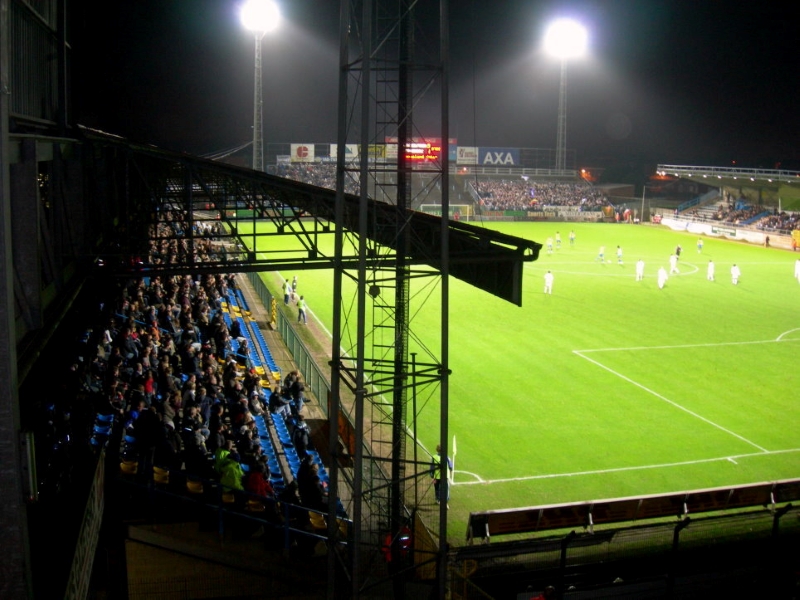
Freethiel
A view of the field isn't always perfect, but the Freethiel remains a nice little stadium with a nice atmosphere.
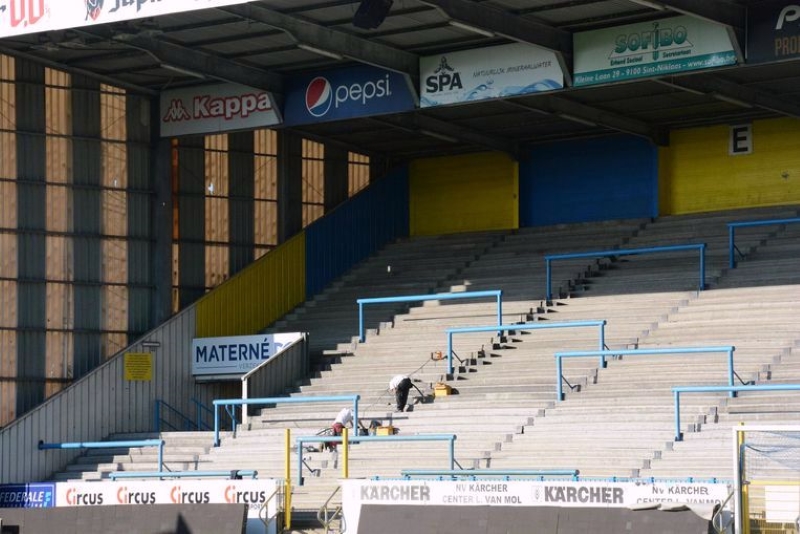
Freethiel
The large standing stand from 1974 is the location of the noisiest Beveren's supporters.
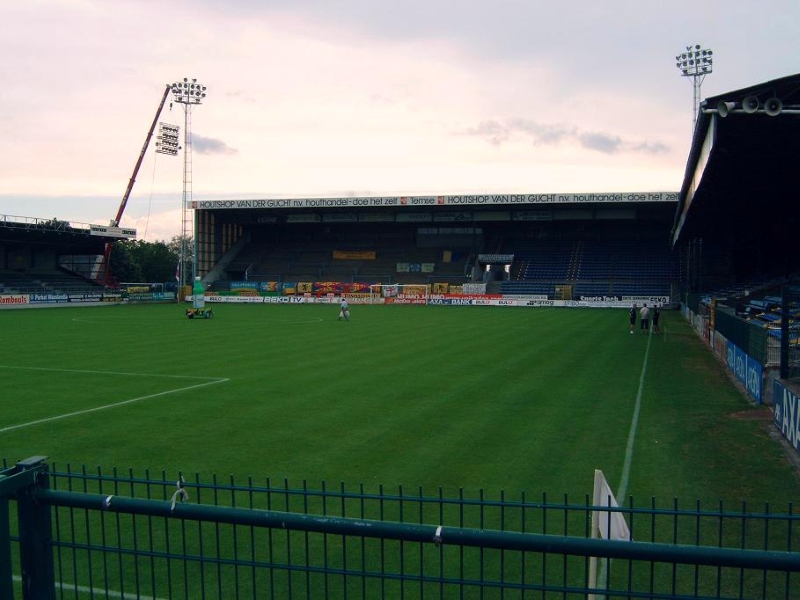
Freethiel
For the last qualification for UEFA in 2004, temporary lighting on a crane and...
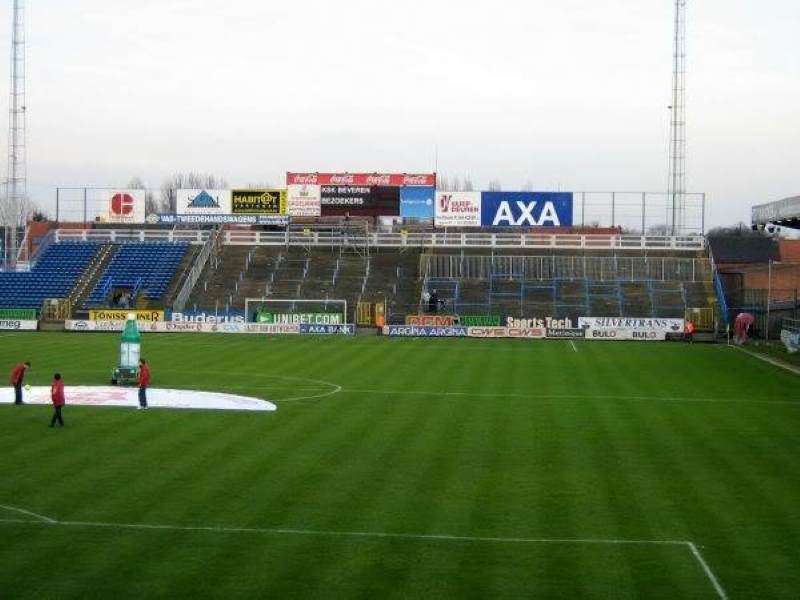
Freethiel
... standing places partly replaced by seats.
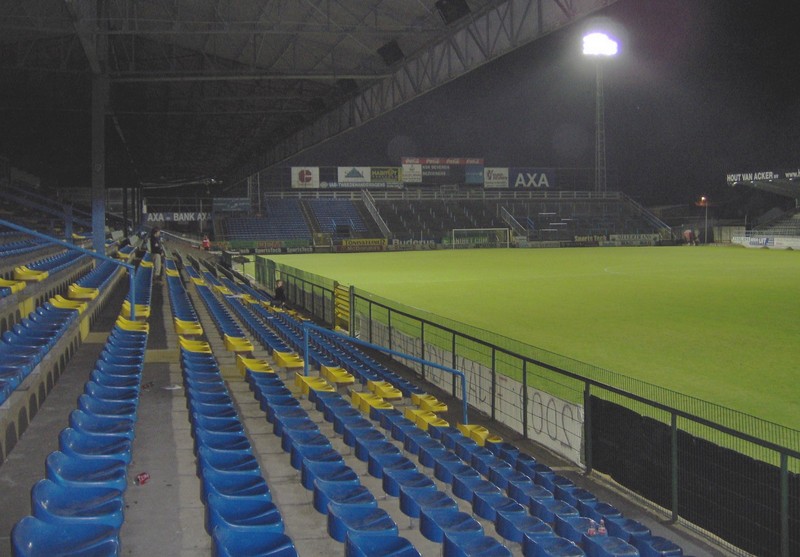
Freethiel
From the main stand.
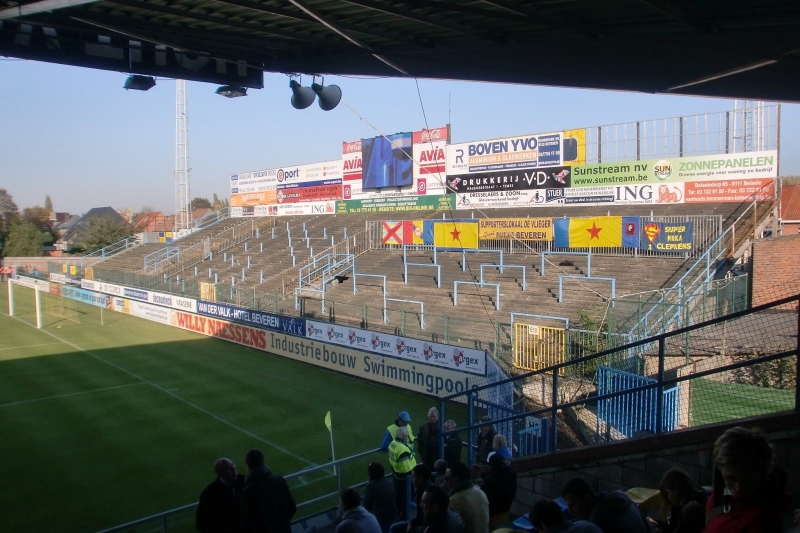
Freethiel
The old stand on the Klapperstraat side has fewer and fewer places still available.
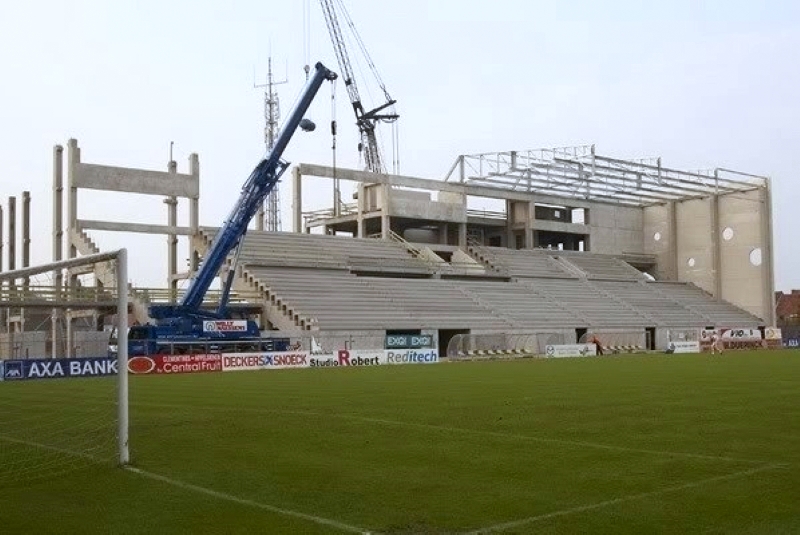
Freethiel
2008-2009 : reconstruction of the main stand and soon the end of the route for the glorious KSK Beveren.
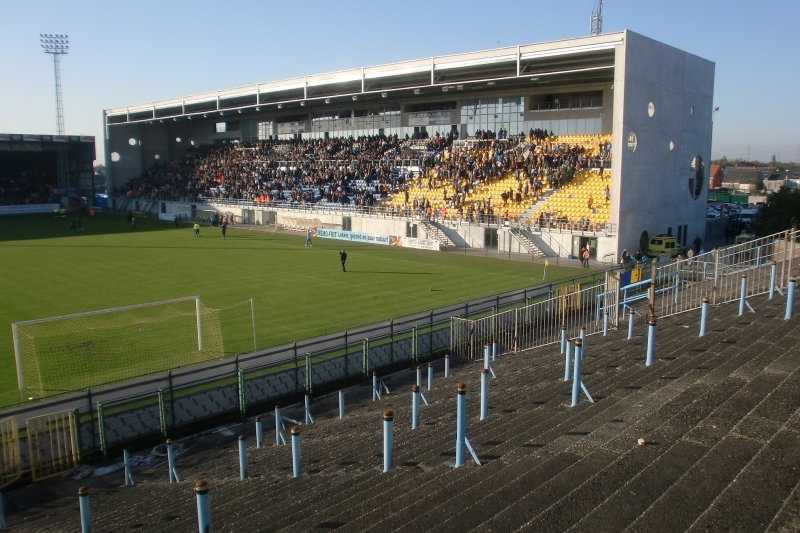
Freethiel
The new main stand, now occupied by Waasland-Beveren.
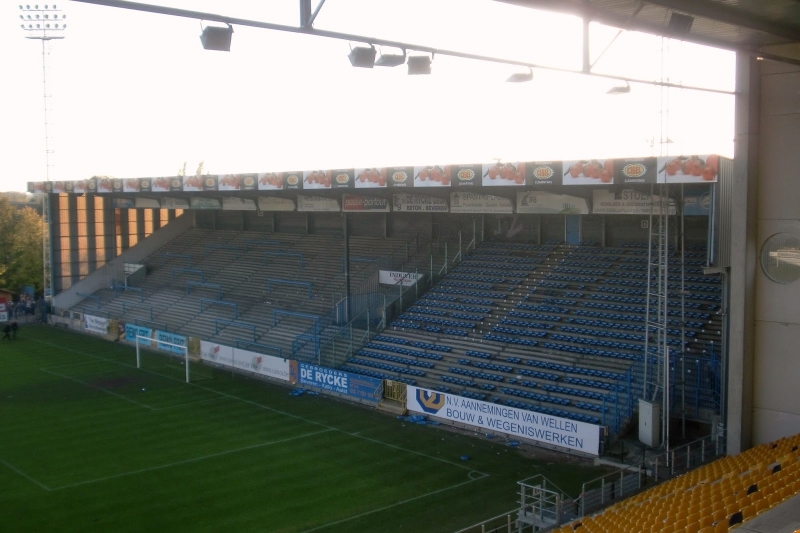
Freethiel
The large standing grandstand, partly equipped with seating.
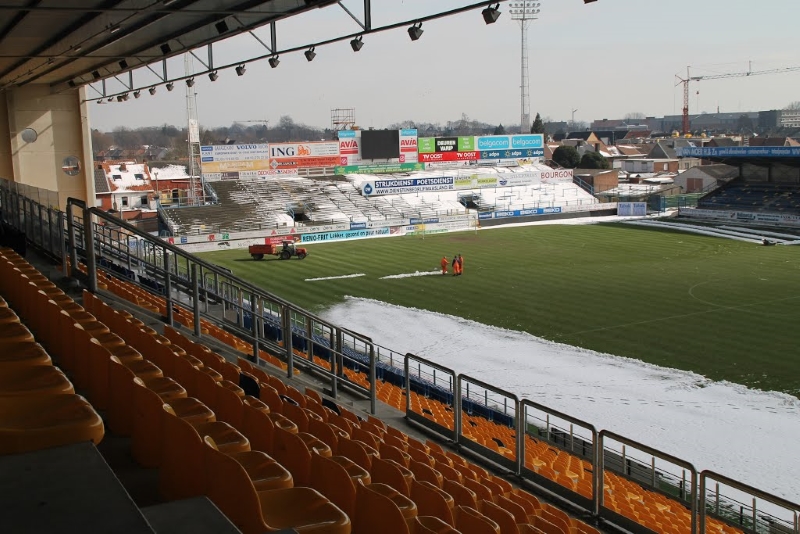
Freethiel
In the background, the terrace built in 1972.
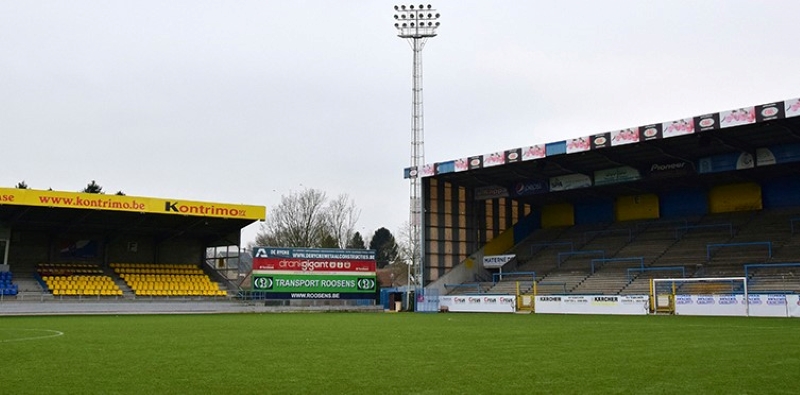
Freethiel
The small side stand and the large standing stand.
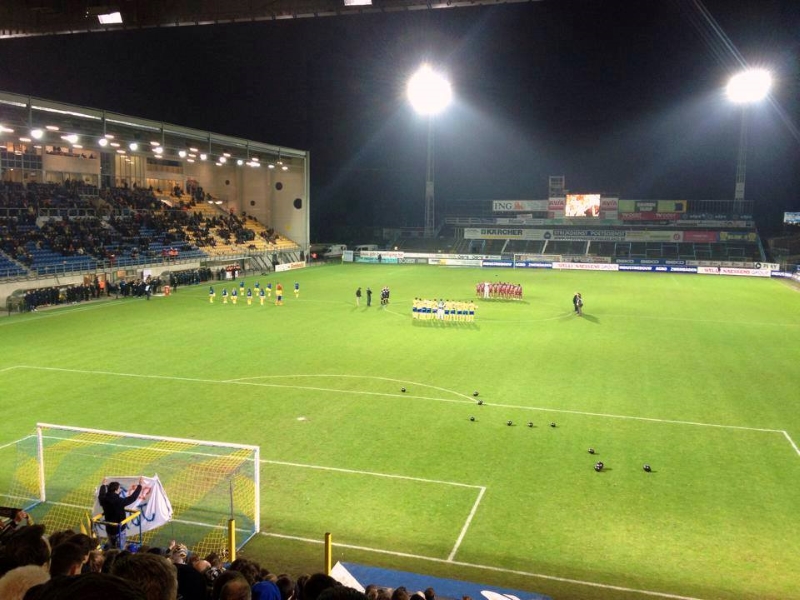
Freethiel
An attendance still present but significantly fewer than before.
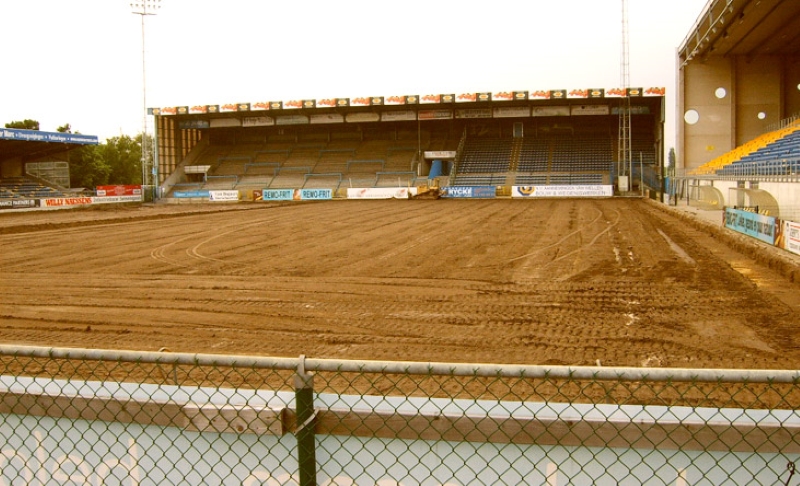
Freethiel
Lawn replacement.
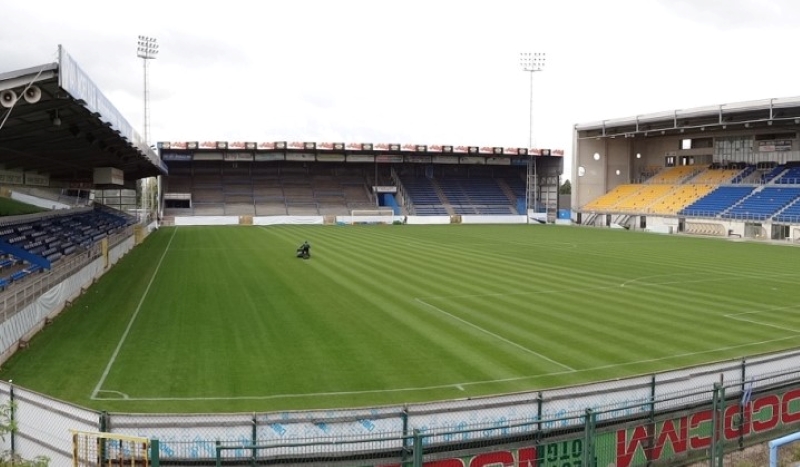
Freethiel
The Freethiel now has a new face and a new resident club.
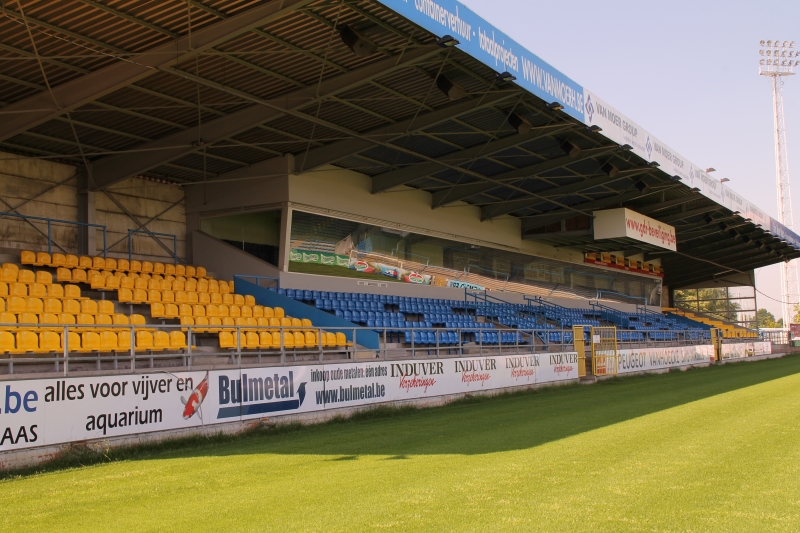
Freethiel
The small stand with business seats. The stadium is now up to current standards.
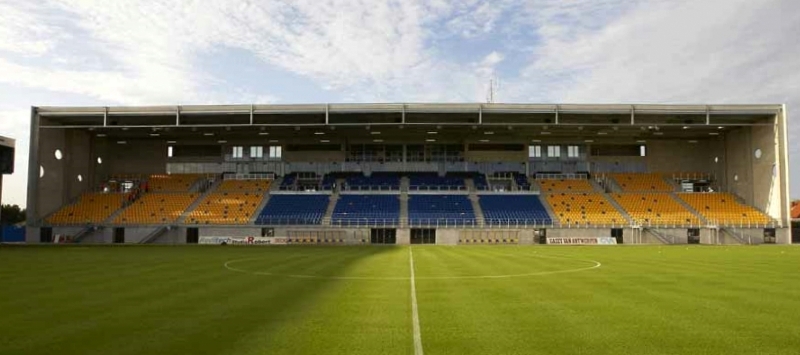
Freethiel
The new main stand as a whole.
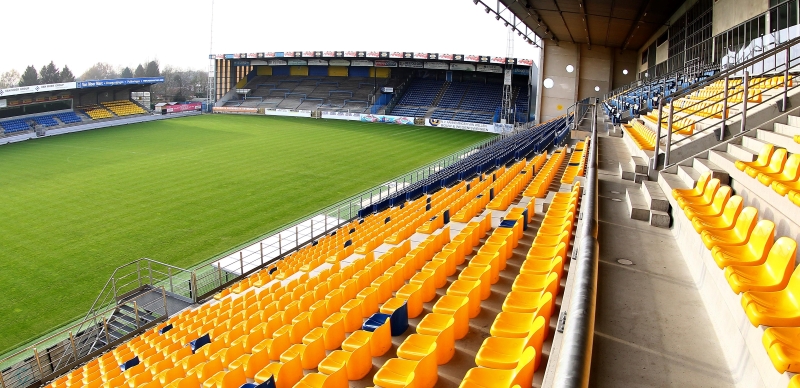
Freethiel
From the new main stand.
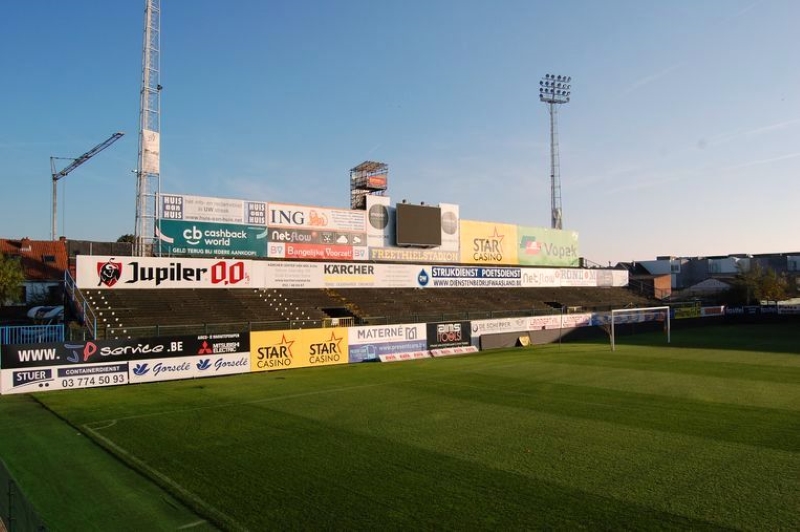
Freethiel
The terrace condemned in 2012. Pending its reconstruction, it now serves as a wall of advertising.
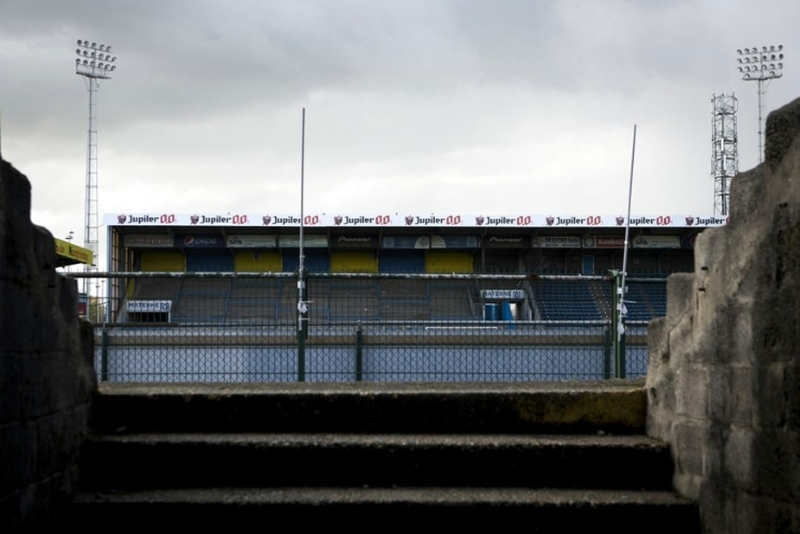
Freethiel
View from the stand closed in 2012.
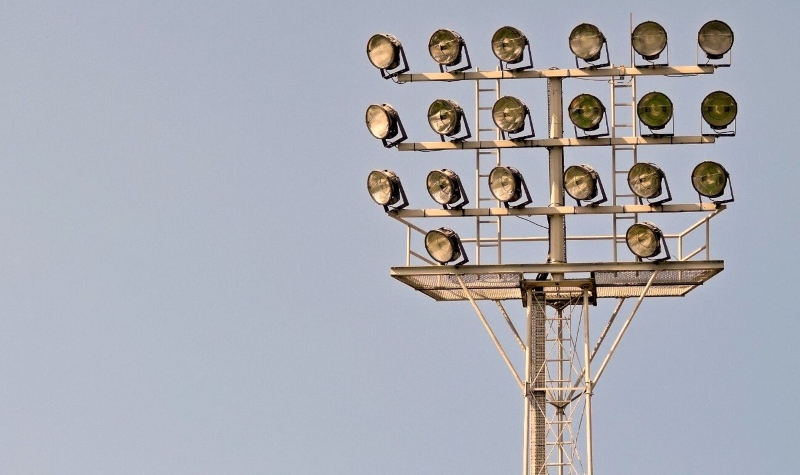
Freethiel
A stadium used to European jousting during the 20th century must now be content with the low-ranking matches of the Belgian championship.
Note
-
This article comes from my old site www.foothisto.be but was never published.
It has been somewhat modified and updated recently (May 2020).
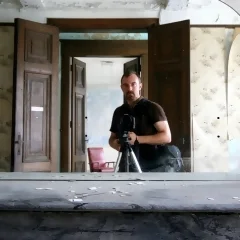
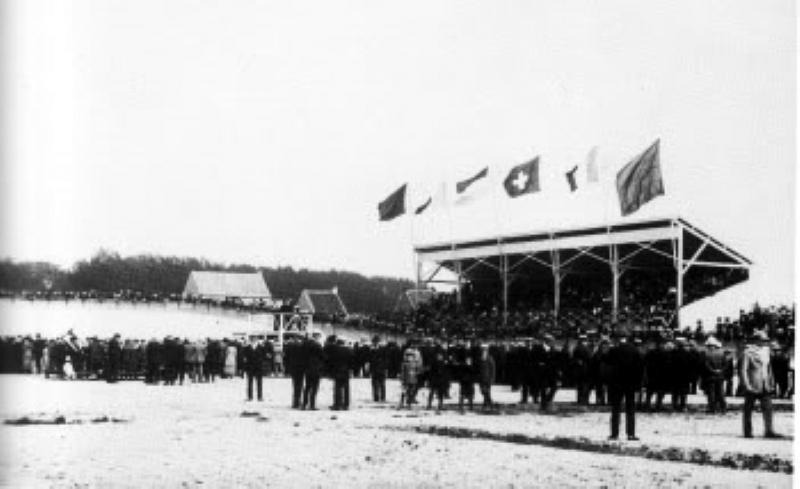
Soyez le premier & devenez quelqu’un de bien • Be the first & become a good person